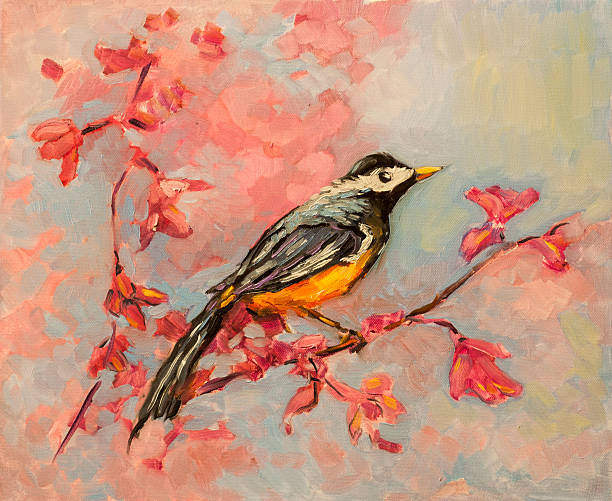The Advantages of Purchasing Oil Paints: Why They Are a Timeless Investment
The advantages of buying oil paints expand past mere visual appeals. These artworks carry historic value and cultural value, making them beneficial enhancements to any type of collection. Their one-of-a-kind textures and techniques add to an interesting visual experience. Moreover, well established musicians frequently see their job appreciate gradually, offering a possible monetary advantage - oil paintings for sale. As one checks out the multifaceted reasons for buying oil paints, the much deeper implications of such a selection become increasingly apparent
The Visual Appeal of Oil Paints
The allure of oil paintings hinges on their abundant structures and vibrant shades, which can change any kind of area into an interesting atmosphere. These art work have a depth that astounds viewers, drawing them right into the complexities of the brushstrokes and the interaction of light and shadow. The glossy surface of oil paint enhances the visual experience, offering life to scenes and subjects in a way that other mediums often can not attain. Additionally, the range of designs-- from classic to modern-- enables a diverse selection that can enhance any décor. The emotional resonance conveyed through shade choices and strategies includes a layer of link in between the artwork and the observer, making oil paintings not just ornamental things, yet powerful expressions of artistic vision.
Historic Importance and Cultural Value
Oil paintings act as vital links to an artistic heritage, showcasing techniques and styles that have progressed over centuries. They envelop social expressions and identities, mirroring the worths and stories of their time. By getting these jobs, individuals add to the preservation of background and the admiration of varied cultural legacies.
Imaginative Heritage Conservation
While many might ignore the importance of creative heritage, purchasing oil paints plays an essential duty in preserving historic and cultural narratives. These art work act as visual documents of their time, capturing the essence of societal values, practices, and historic events. By getting oil paintings, collection agencies add to the securing of social traditions, guaranteeing that future generations can value and learn from these creative expressions. Each item mirrors the one-of-a-kind tale of its designer and the context in which it was made. Furthermore, the ongoing recognition and display of oil paints in different setups aid to foster an understanding of diverse imaginative activities, enriching the cultural landscape. Investing in oil paints is not merely a financial choice yet an act of cultural stewardship.
Social Expression and Identity
Art acts as an effective medium for social expression and identity, reflecting the varied stories that form cultures. Oil paints, in certain, record the significance of social heritage, illustrating sociopolitical climates and historic contexts. Each brushstroke conveys stories and feelings special to particular customs, permitting visitors to involve with the musician's social history. This connection promotes a sense of belonging and recognizing amongst different neighborhoods. In addition, oil paints typically offer as visual paperwork of cultural advancement, showcasing changes in identification over time. The financial investment in these art work not only sustains musicians yet likewise preserves social traditions, making them significant possessions for collection agencies. Inevitably, oil paintings enhance one's recognition for the intricacies of human experience and the abundant tapestry of cultural identification.
Admiration in Worth Gradually

The admiration of oil paints with time is influenced by numerous aspects, consisting of historical worth patterns that reflect altering tastes and social importance. Furthermore, the track record of the musician plays an important role in establishing the artwork's market price, commonly increasing as the artist gains recognition. Market need changes can better influence costs, making oil paints a possibly lucrative investment for collection agencies.
Historic Worth Patterns
As collectors seek to buy concrete possessions, the historic value trends of oil paints disclose an engaging narrative of admiration gradually. Historically, oil paints have actually demonstrated a consistent higher trajectory in value, especially for works by well-known artists. Economic cycles and market need have actually affected these trends, with periods of boosted rate of interest commonly bring about substantial price rises. Public auction records frequently highlight the impressive returns accomplished by legendary items, even more reinforcing the notion of oil paintings as viable lasting financial investments. Furthermore, social motions and changes in enthusiast preferences have actually periodically spurred unanticipated gratitude, disclosing that the art market, while somewhat uncertain, usually favors high quality oil paintings. Subsequently, recognizing these historical fads can assist capitalists in making educated choices.
Artist Track Record Effect
While the reputation of an artist plays a vital function in the admiration of oil paints, it is important to identify that this effect can vary substantially based on numerous elements. Developed musicians, especially those with a substantial historical or social influence, have a tendency to see their jobs appreciate a lot more rapidly. On the other hand, lesser-known or emerging musicians might not experience the same degree of need, influencing their artwork's value. In addition, the musician's capability to develop a consistent body of work and maintain relevance in the art globe can influence long-lasting appreciation. Collection agencies usually seek jobs from artists that are recognized by trustworthy galleries and establishments, which can further boost the worth of an oil painting in time, making artist reputation an essential consideration in investment decisions.

Market Demand Changes
Just how do market demand variations affect the recognition of oil paintings over time? The worth of oil paints is intrinsically linked to market need, which can differ based upon financial problems, trends, and collection agencies' preferences. In times of financial prosperity, need commonly rises, causing boosted costs as even more customers get in the marketplace. Alternatively, during economic recessions, need might diminish, causing worths to go stale and even decrease. In addition, the popularity of specific artists can move, influencing their job's value. Ultimately, understanding market demand is essential for financiers, as well-managed collections can value significantly over time, reflecting both the talent of the musician and the more comprehensive market characteristics. This interplay emphasizes the importance of tactical purchasing in oil painting financial investments.
One-of-a-kind Appearances and Techniques
Oil paints mesmerize visitors with their unique textures and techniques, showcasing the artist's proficiency over the tool. The thick application of paint, recognized as impasto, develops a three-dimensional impact, welcoming touch and enhancing visual deepness. Artists often use various brush strokes, layering, and polishing methods to attain luminescent shades and elaborate information. This flexibility enables rich contrasts and refined changes, making each artwork uniquely meaningful. Furthermore, the sluggish drying time of oil paint makes it possible for musicians to blend colors perfectly, resulting in smooth gradients and dynamic tones. These methods add to the paint's overall character, making it a compelling prime focus. Each oil painting functions as a sign of the creative thinking and ability integral in standard artistic practices.
Flexibility in Home Decoration
The unique textures and techniques of oil paintings not just showcase creative ability however additionally enhance their flexibility in home design. These artworks can flawlessly match various interior designs, from modern-day minimalist to conventional elegance. Oil paintings function as focal points, drawing attention and sparking conversation amongst guests. Their abundant shades and deepness can integrate with various color palettes, making them versatile to changing design fads. In addition, the emotional vibration of oil paintings can develop setting, whether it be warmth in a cozy living area or vibrancy in an imaginative office. By integrating oil paints, home owners elevate their rooms, transforming them right into thoughtfully curated settings that show individual preference and creative recognition. Inevitably, oil paintings are an enduring selection for enhancing home aesthetics.
Connection to Prominent Musicians
While several art forms can stimulate adoration, acquiring oil paintings commonly develops a special connection to popular musicians throughout background. Possessing an oil painting permits collectors to read more involve with the imaginative visions of masters like Van Gogh, Monet, and Rembrandt. Each brushstroke personifies the musician's emotions, intents, and strategies, using insight into their world. This link transcends time, as each item carries a story that reflects the historic and social context of its production. Collectors not only acquire a work of art however additionally a piece of the artist's tradition. As art enthusiasts check out the tales behind these paintings, they gain a much deeper gratitude for the craftsmanship and creative movements that shaped their advancement, enhancing the worth of their financial investment.
Emotional and Psychological Advantages of Art
Art often acts as an effective stimulant for psychological and psychological well-being. The existence of oil paintings in a living space can stimulate a variety of emotions, from tranquility to motivation. Their detailed details and vibrant shades use visitors a getaway, enabling reflection and consideration. Researches recommend that engaging with art can decrease anxiety and anxiety, fostering a feeling of calm. In addition, possessing original artwork can produce an individual connection, improving sensations of satisfaction and happiness. This psychological bond commonly brings about a much deeper admiration of one's surroundings, changing a home right into a home. Eventually, the emotional advantages of art extend past appearances, contributing to overall psychological wellness and enriching life experiences.

Frequently Asked Inquiries
How Do I Pick the Right Oil Painting for My Room?
Picking the appropriate oil painting involves considering the room's color design, dimension, and total aesthetic. One ought to evaluate personal preference, the paint's psychological effect, and just how well it matches existing design prior to deciding.

What Elements Impact the Value of an Oil Painting?
The value of an oil paint is affected by factors such as the artist's track record, provenance, historic value, market, rarity, and problem demand. Each element adds to general worth and charm amongst collectors.
Exactly How Can I Look After and Maintain My Oil Painting?
To look after and keep an oil paint, one must routinely dust it with a soft towel, avoid direct sunshine direct exposure, control humidity levels, and consider expert cleansing to protect its vibrancy and honesty.
Are There Specific Musicians Known for Their Oil Paints?
Countless musicians are renowned for their oil paintings - oil paintings for sale. Noteworthy numbers consist of Vincent van Gogh, Claude Monet, and Rembrandt, each celebrated for their one-of-a-kind methods and contributions to the art globe via vivid, textured oil tools
Where Can I Purchase Genuine Oil Paintings?
Genuine oil paints can be bought from respectable galleries, art fairs, and on-line platforms concentrating on art. Enthusiasts should verify the credibility and provenance prior to making an acquisition to assure an important investment. Historically, oil paintings have actually demonstrated a consistent upward trajectory in value, particularly for jobs by well-known artists. While the reputation of an artist plays a vital duty in the appreciation of oil paintings, it is crucial to identify that this influence can differ significantly based on numerous aspects. Oil paints mesmerize visitors with their distinctive textures and techniques, showcasing the artist's mastery over the medium. While many art kinds can stimulate appreciation, acquiring oil paintings typically develops a distinct link to distinguished artists throughout history. The worth of an oil paint is influenced by elements such as the artist's track record, provenance, historical significance, condition, market, and rarity need.